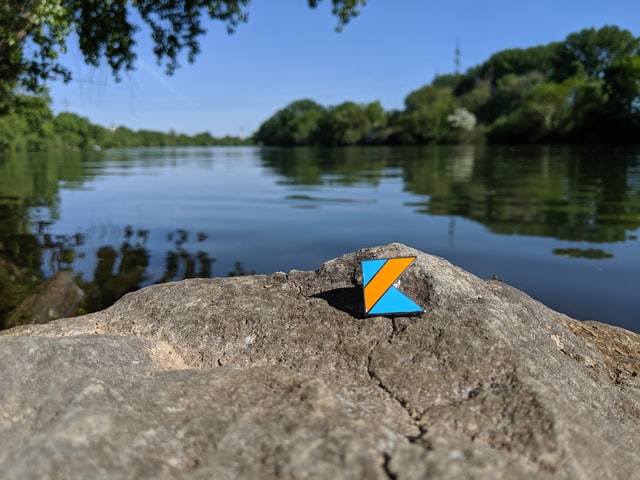개요Permalink
- 마이크로서비스 아키텍처는 여러 서비스를 배포 할 수 있도록 하는 기술이다.
- 각각의 서버들에
Request를 보낼 때 인증을 거쳐야 하는데, 마이크로서비스가 늘어날수록 서비스의 수 만큼 인증을 받아야 하는 번거로움이 있다 - 다수의 인증을 줄여주고, 한번의 인증으로 여러서비스를 한번에 사용 할 수 있도록 도와주는 Spring Cloud Gateway를 사용 해 보도록 하자
API GatewayPermalink
- API Gateway는 다수의 서버를 하나로 묶어, 외부 애플리케이션 혹은 클라이언트에 대한 하나의 진입점이라고 생각하면 된다
- 외부 어플리케이션 및 외부 클라이언트들은 마이크로 서비스에 직접 엑세스 하는 것이 제한되어 있기 때문에 그 사이의 중개자 역할을 한다
API Gateway가 필요한 이유Permalink
- 마이크로서비스 기반 애플리케이션에서는 일반적으로 서비스 마다 하나의 서버에 배포된다
- 이 때, 서비스를 요창하는 주체는 각각의 서비스의 호스트 및 포트를 기억해야 하고, 보안 인증을 거쳐야 한다
- 위에서 설명했듯, 이 일련의 과정들을 API Gateway로 해결이 가능하다
API Gateway의 단점Permalink
- 모든 요청이 API gateway를 거쳐지나가기 때문에 성능이 저하될 수 있음
- Request를 할 때 API Gateway에서 오류가나면 요청이 더이상 처리되지 않음
Spring Cloud Gateway 생성하기Permalink
- 배달 서비스를 제공하는 어플리케이션의 일부분을 만들어보려고 한다.
- 자세하게 구현은 되지 않겠지만
endpoint가 나뉘고 따로 관리가 된다는 점을 생각하면서 작업 해 보도록 하려고 한다
데이터베이스 생성Permalink
-
마찬가지로
docker-compose를 사용해서 데이터베이스를 구축하려고한다version: "3" services: mysql-docker: image: arm64v8/mariadb ports: - "3306:3306" environment: TZ: Asia/Seoul MYSQL_ROOT_PASSWORD: qwerqwer123 MYSQL_DATABASE: deliveryapp MYSQL_USER: paul MYSQL_PASSWORD: qwerqwer123 container_name: "docker-maria" volumes: - ./docker-databasea/maria:/var/lib/mysql -
docker-compose -f docker-compose-database.yml up -d명령어로 데이터베이스를 실행시킨다
마이크로 서비스 생성 1. 유레카 서버 생성Permalink
- 마이크로 서비스를 서로 이어주고 통신하기 위해서는
Eureka Server를 생성해야 한다 Eureka Server를 생성하고, 다른 서비스 어플리케이션에서는Eureka Client를 세팅 해야 한다
DependencyPermalink
- SpringBoot
- Eureka Server
Eureka Annotation 설정Permalink
- Spring Boot starter 클래스에
@EnableEurekaServer를 설정 해 주어서 유레카 서버임을 알려준다package com.example.springeurekasimple; import org.springframework.boot.SpringApplication; import org.springframework.boot.autoconfigure.SpringBootApplication; import org.springframework.cloud.netflix.eureka.server.EnableEurekaServer; @SpringBootApplication @EnableEurekaServer public class SpringEurekaSimpleApplication { public static void main(String[] args) { SpringApplication.run(SpringEurekaSimpleApplication.class, args); } }
application properties 값 작성Permalink
server.port=8761
eureka.client.register-with-eureka=false
eureka.client.fetch-registry=false
마이크로 서비스 생성 2. 주문서비스 서버 생성Permalink
- 주문서비스를 제공하는 서버를 만든다
- Order는 데이터베이스 테이블명시를 꼭 해주어야한다 (database 에약어 때문)
order service DependencyPermalink
- SpringBoot
- Eureka Client
- mariadb
- jpa
- lombok
order service Eureka Annotation 설정Permalink
- Spring Boot starter 클래스에
@EnableEurekaClient를 설정 해 주어서 유레카 서버와 연결된 Client임을 명시 해준다package com.example.springbootsimpleorderserver; import org.springframework.boot.SpringApplication; import org.springframework.boot.autoconfigure.SpringBootApplication; import org.springframework.cloud.netflix.eureka.EnableEurekaClient; @SpringBootApplication @EnableEurekaClient public class SpringBootSimpleOrderServerApplication { public static void main(String[] args) { SpringApplication.run(SpringBootSimpleOrderServerApplication.class, args); } }
order service applciation properties 값 작성Permalink
```properties
server.port=9009
#Service Id
spring.application.name=ORDERING-SERVICE
#Publish Application(Eureka 등록)
eureka.client.service-url.default-zone=http://localhost:8761/eureka
#id for eureka server
eureka.instance.instance-id=${spring.application.name}:${random.value}
## Database
spring.datasource.driver-class-name=org.mariadb.jdbc.Driver
spring.datasource.url=jdbc:mysql://localhost:3306/deliveryapp
spring.datasource.username=paul
spring.datasource.password=qwerqwer123
spring.jpa.database-platform=org.hibernate.dialect.MariaDB103Dialect
spring.jpa.show-sql=true
spring.jpa.hibernate.ddl-auto=update
```
order service DomainPermalink
- domain 패키지 생성
-
테이블 이름 설정
package com.example.springbootsimpleorderserver.domain; import lombok.AllArgsConstructor; import lombok.Data; import lombok.NoArgsConstructor; import javax.persistence.Entity; import javax.persistence.GeneratedValue; import javax.persistence.Id; import javax.persistence.Table; @Data @NoArgsConstructor @AllArgsConstructor @Entity @Table(name = "ORDERS") public class OrderDomain { private static final long serialVersionUID = 1L; @Id @GeneratedValue private Integer id; private String orderCode; private String orderObject; private String orderStatus; private Integer orderPrice; }
order service RepositoryPermalink
- JPARepository를 상속받는 OrderRepository 생성
- repository 패키지 생성 후 하위에 작성 package com.example.springbootsimpleorderserver.repository; import com.example.springbootsimpleorderserver.domain.OrderDomain; import org.springframework.data.jpa.repository.JpaRepository; import org.springframework.stereotype.Repository; @Repository public interface OrderRepository extends JpaRepository<OrderDomain, Integer> { }
order service ServiceImpl, Service InterfacePermalink
-
order의 service레이어 작성
-
service 패키지 작성 후,
service인터페이스,serviceimpl클래스 생성// service interface package com.example.springbootsimpleorderserver.service; import com.example.springbootsimpleorderserver.domain.OrderDomain; import java.util.List; public interface OrderService { public OrderDomain createOrder(OrderDomain order); public OrderDomain getOrder(Integer orderId); public OrderDomain updateOrder(OrderDomain order, Integer orderId) throws Exception; public void deleteOrder(Integer orderId) throws Exception; public List<OrderDomain> getAllOrders(); } // serviceImpl package com.example.springbootsimpleorderserver.service; import com.example.springbootsimpleorderserver.domain.OrderDomain; import com.example.springbootsimpleorderserver.repository.OrderRepository; import org.springframework.beans.factory.annotation.Autowired; import org.springframework.stereotype.Service; import java.util.List; @Service public class OrderServiceImpl implements OrderService { @Autowired private OrderRepository orderRepository; @Override public OrderDomain createOrder(OrderDomain order) { return orderRepository.save(order); } @Override public OrderDomain getOrder(Integer orderId) { return orderRepository.findById(orderId).orElse(null); } @Override public OrderDomain updateOrder(OrderDomain order, Integer orderId) throws Exception { /* order status 변화주기 status: ready -> processing -> shipped -> delivered */ OrderDomain orderObject = orderRepository.findById(orderId).orElse(null); if (orderObject == null) { throw new Exception("Order not found"); } switch (orderObject.getOrderStatus()) { case "ready": orderObject.setOrderStatus("processing"); break; case "processing": orderObject.setOrderStatus("shipped"); break; case "shipped": orderObject.setOrderStatus("delivered"); break; default: throw new Exception("order status is not ready"); } return orderRepository.save(orderObject); } @Override public void deleteOrder(Integer orderId) throws Exception { OrderDomain orderObject = orderRepository.findById(orderId).orElse(null); if (orderObject != null) { orderRepository.delete(orderObject); } else { throw new Exception("Order not found"); } } @Override public List<OrderDomain> getAllOrders() { return orderRepository.findAll(); } }
order service ControllerPermalink
- 컨트롤러 패키지 생성 후 하위에 API 엔트포인트 작성
package com.example.springbootsimpleorderserver.controller; import com.example.springbootsimpleorderserver.domain.OrderDomain; import com.example.springbootsimpleorderserver.service.OrderService; import org.springframework.beans.factory.annotation.Autowired; import org.springframework.http.ResponseEntity; import org.springframework.web.bind.annotation.*; import java.util.List; @RestController @RequestMapping("/order") public class OrderController { @Autowired OrderService orderService; @PostMapping() public OrderDomain createOrder(@RequestBody OrderDomain order) { return orderService.createOrder(order); } @GetMapping() public ResponseEntity<List<OrderDomain>> getOrder() { return ResponseEntity.ok(orderService.getAllOrders()); } @GetMapping("/{id}") public OrderDomain getOrder(@PathVariable Integer id) { return orderService.getOrder(id); } @PutMapping("/{id}") public OrderDomain updateOrder(@PathVariable Integer id, @RequestBody OrderDomain order) throws Exception { return orderService.updateOrder(order, id); } @DeleteMapping("/{id}") public String deleteOrder(@PathVariable Integer id) throws Exception { orderService.deleteOrder(id); return "Order with id: " + id + " deleted."; } }
마이크로 서비스 생성 3. 결제서비스 서버 생성Permalink
- 결제서비스를 제공하는 서버를 만든다
- 상세 로직말고 컨트롤러만 작성해서, Endpoint를 확인한다
Payment service DependencyPermalink
- SpringBoot web
- Eureka Client
Payment service Eureka Annotation 설정Permalink
-
Spring Boot starter 클래스에
@EnableEurekaClient를 설정 해 주어서 유레카 서버와 연결된 Client임을 명시 해준다package com.example.springbootsimplepaymentserver; import org.springframework.boot.SpringApplication; import org.springframework.boot.autoconfigure.SpringBootApplication; import org.springframework.cloud.netflix.eureka.EnableEurekaClient; @SpringBootApplication @EnableEurekaClient public class SpringBootSimplePaymentServerApplication { public static void main(String[] args) { SpringApplication.run(SpringBootSimplePaymentServerApplication.class, args); } }Payment service applciation properties 값 작성Permalink
server.port=9560 #Service Id spring.application.name=PAYMENT-SERVICE #Publish Application(Eureka ??) eureka.client.service-url.default-zone=http://localhost:8761/eureka #id for eureka server eureka.instance.instance-id=${spring.application.name}:${random.value}
Payment service ControllerPermalink
- 결제 상태를 확인 하는 간단한 컨트롤러만 작성
-
컨트롤러 패키지 생성 후 하위에 작성
package com.example.springbootsimplepaymentserver.controller; import org.springframework.beans.factory.annotation.Value; import org.springframework.http.ResponseEntity; import org.springframework.web.bind.annotation.GetMapping; import org.springframework.web.bind.annotation.RequestMapping; import org.springframework.web.bind.annotation.RestController; @RestController @RequestMapping("/payment") public class PaymentController { @Value("${server.port}") private String port; @GetMapping("/status") public ResponseEntity<String> getStatus() { return ResponseEntity.ok("Payment server is running on port " + port); } }
마이크로 서비스 생성 4. API Gateway 생성Permalink
- API Gateway를 제공하는 서버를 만든다
- OrderService, PaymentService 서버를 각각 연결 해 준다
API Gateway DependencyPermalink
- Spring Reactive Web
- Eureka Discovery Client
- Gateway
API Gateway Eureka Annotation 설정Permalink
-
Spring Boot starter 클래스에
@EnableEurekaClient를 설정 해 주어서 유레카 서버와 연결된 Client임을 명시 해준다package com.example.springbootsimplegateway; import org.springframework.boot.SpringApplication; import org.springframework.boot.autoconfigure.SpringBootApplication; import org.springframework.cloud.netflix.eureka.EnableEurekaClient; @SpringBootApplication @EnableEurekaClient public class SpringBootSimpleGatewayApplication { public static void main(String[] args) { SpringApplication.run(SpringBootSimpleGatewayApplication.class, args); } }
API Gateway application properties 값 작성Permalink
server.port=8080
spring.application.name=GATEWAY-SERVICE
eureka.client.service-url.defaultZone=http://localhost:8761/eureka
API Gateway ConfigurationPermalink
- API Gateway에 외부로부터
Request가 들어왔을 때 처리 해 줄 라우터 설정을 작성 해 준다 -
config 패키지 하위에 작성
package com.example.springbootsimplegateway.config; import org.springframework.cloud.gateway.route.RouteLocator; import org.springframework.cloud.gateway.route.builder.RouteLocatorBuilder; import org.springframework.context.annotation.Bean; import org.springframework.context.annotation.Configuration; @Configuration public class SpringCloudGatewayRouting { @Bean public RouteLocator configurationRoute(RouteLocatorBuilder rlb) { return rlb.routes() .route("paymentId", r -> r.path("/payment/**").uri("lb://PAYMENT-SERVICE")) .route("orderId", r -> r.path("/order/**").uri("lb://ORDER-SERVICE")) .build(); } } - 위에서 작성한 PAYMENT-SERVICE, ORDER-SERVICE의 이름을 잘 기억 해주고, uri에 등록 해 주어 자동으로 매핑되고 라우팅 할 수 있도록 해 준다
API Gateway 및 Euerka 서버 테스트Permalink
- Euerka Server시작
- OrderService, PaymentService 서버 시작
- (option) 각각 OrderSerivce와 PaymentService를 포트만 달리해서 여러개 띄우기
- API Gateway 서버 시작
아래와 같은 로그를 확인했다면, 유레카 서비스와 각각 MSA어플리케이션이 잘 매핑이 되었고 등록이 서로 잘 된 것이다
INFO 71481 --- [nio-8761-exec-2] c.n.e.registry.AbstractInstanceRegistry : Registered instance ORDERING-SERVICE/ORDERING-SERVICE:a94db2fd0ad472b21714a9ebcb717736 with status UP (replication=false)
INFO 71481 --- [nio-8761-exec-3] c.n.e.registry.AbstractInstanceRegistry : Registered instance ORDERING-SERVICE/ORDERING-SERVICE:a94db2fd0ad472b21714a9ebcb717736 with status UP (replication=true)
INFO 71481 --- [nio-8761-exec-4] c.n.e.registry.AbstractInstanceRegistry : Registered instance GATEWAY-SERVICE/192.168.31.235:GATEWAY-SERVICE:8080 with status UP (replication=false)
INFO 71481 --- [nio-8761-exec-6] c.n.e.registry.AbstractInstanceRegistry : Registered instance GATEWAY-SERVICE/192.168.31.235:GATEWAY-SERVICE:8080 with status UP (replication=true)
INFO 71481 --- [a-EvictionTimer] c.n.e.registry.AbstractInstanceRegistry : Running the evict task with compensationTime 0ms
INFO 71481 --- [nio-8761-exec-7] c.n.e.registry.AbstractInstanceRegistry : Registered instance PAYMENT-SERVICE/PAYMENT-SERVICE:e94906e028963a992b89eea164abe00d with status UP (replication=false)
INFO 71481 --- [nio-8761-exec-8] c.n.e.registry.AbstractInstanceRegistry : Registered instance PAYMENT-SERVICE/PAYMENT-SERVICE:e94906e028963a992b89eea164abe00d with status UP (replication=true)
INFO 71481 --- [a-EvictionTimer] c.n.e.registry.AbstractInstanceRegistry : Running the evict task with compensationTime 4ms
정리Permalink
- Euerka Server는 처음 Spring Euerka에서 설정한 8761 포트로 접속하면 확인 할 수 있다
- 포트를 각각 달리 했음에도 불구하고, API Gateway에서 설정한 port
8080으로 접속이 가능하다 - order서비스, payment서비스는 각각
localhost:8080/order와localhost:8080/payment으로 접속이 가능하다. order서비스,payment서비스를 각각 여러대의 서버를 띄워 확인하면 API Gateway가 자동적으로 포트를 바꿔 연결 해 주는 것을 확인할 수 있다










댓글남기기